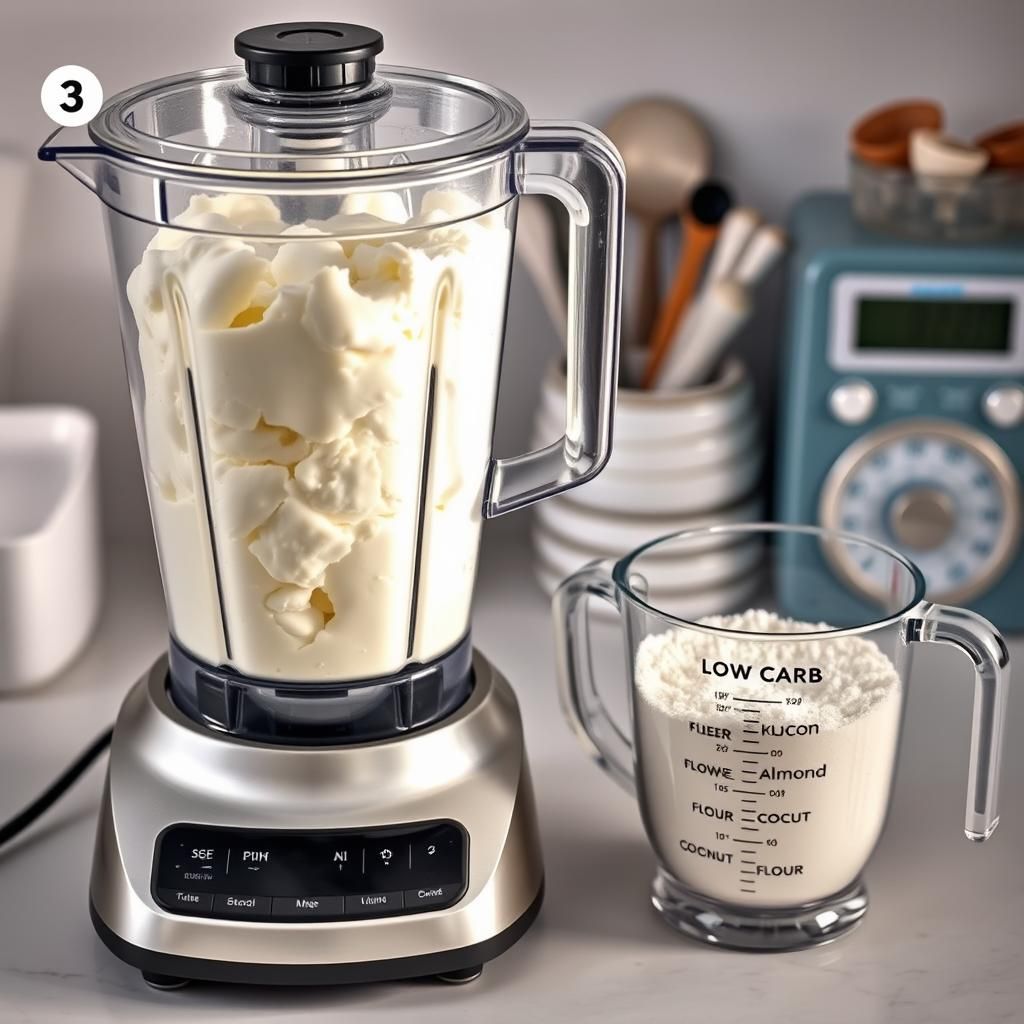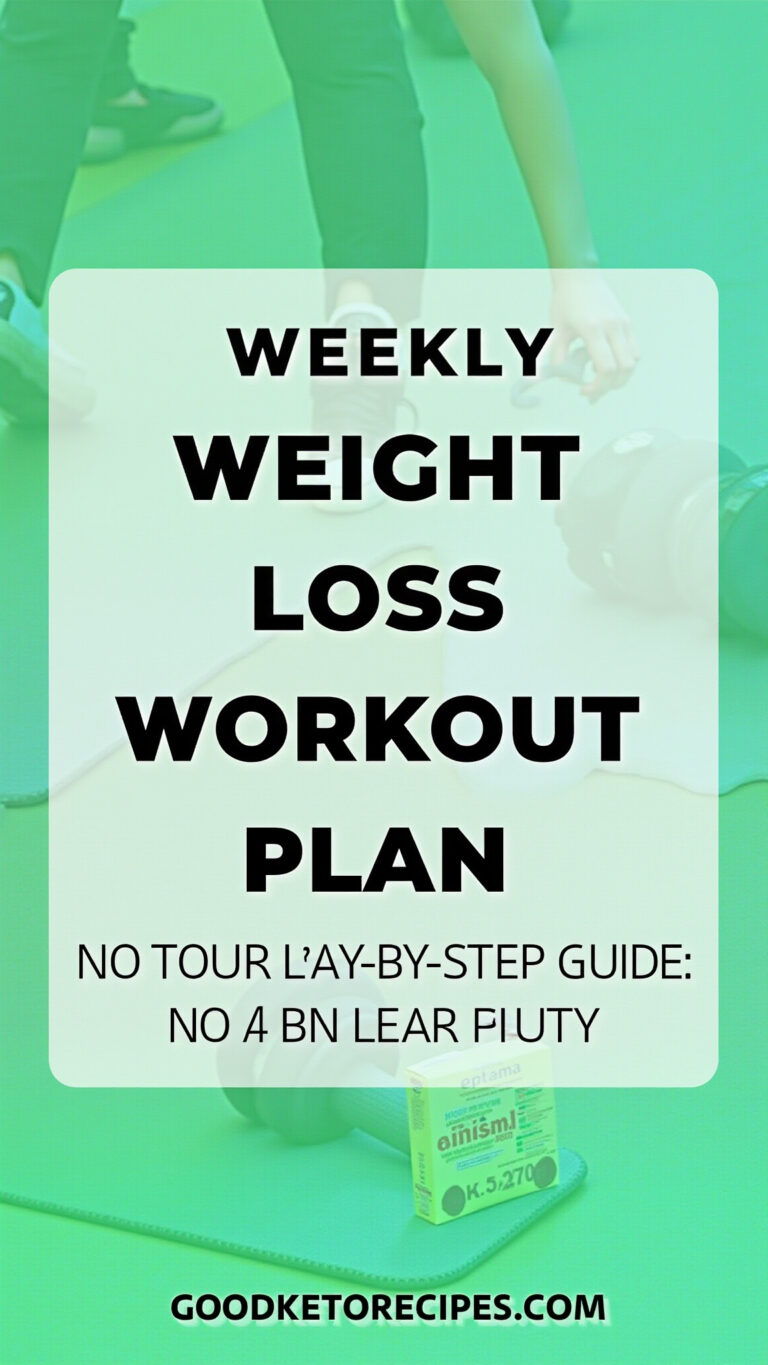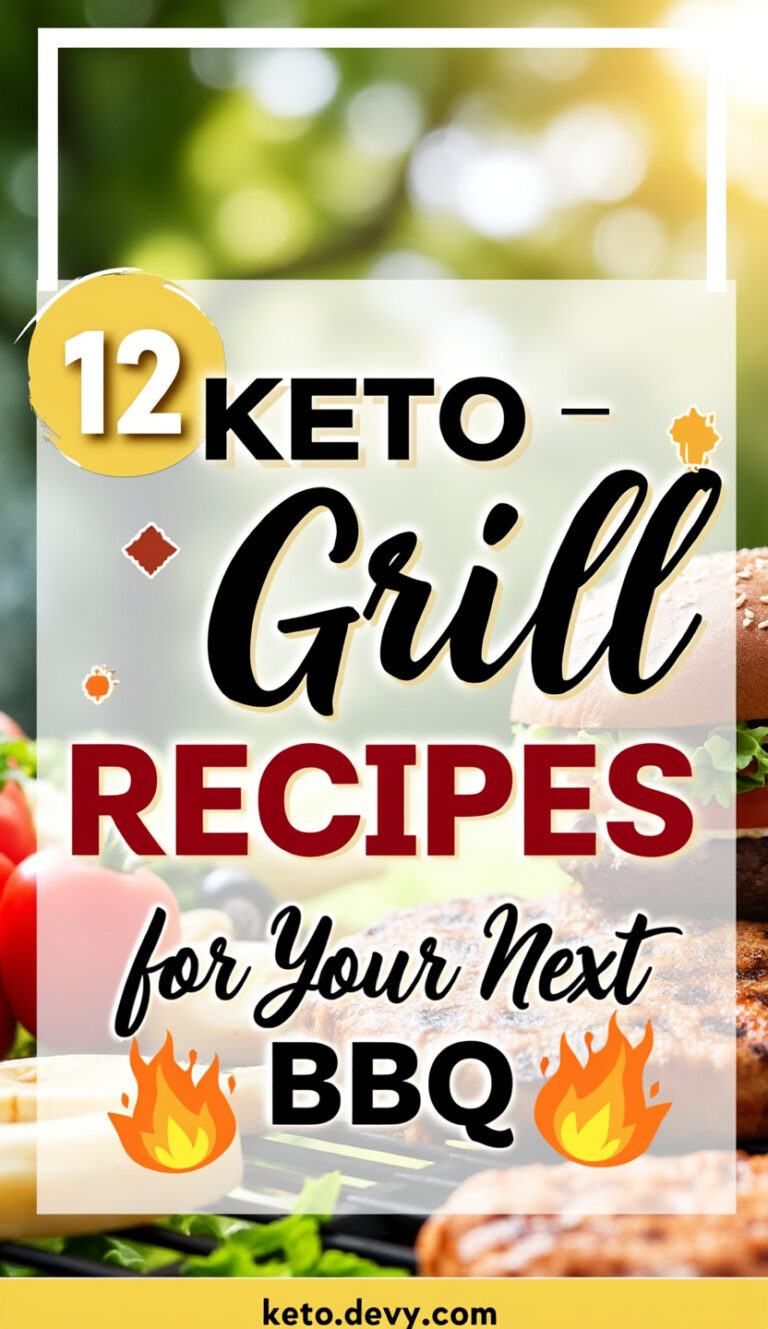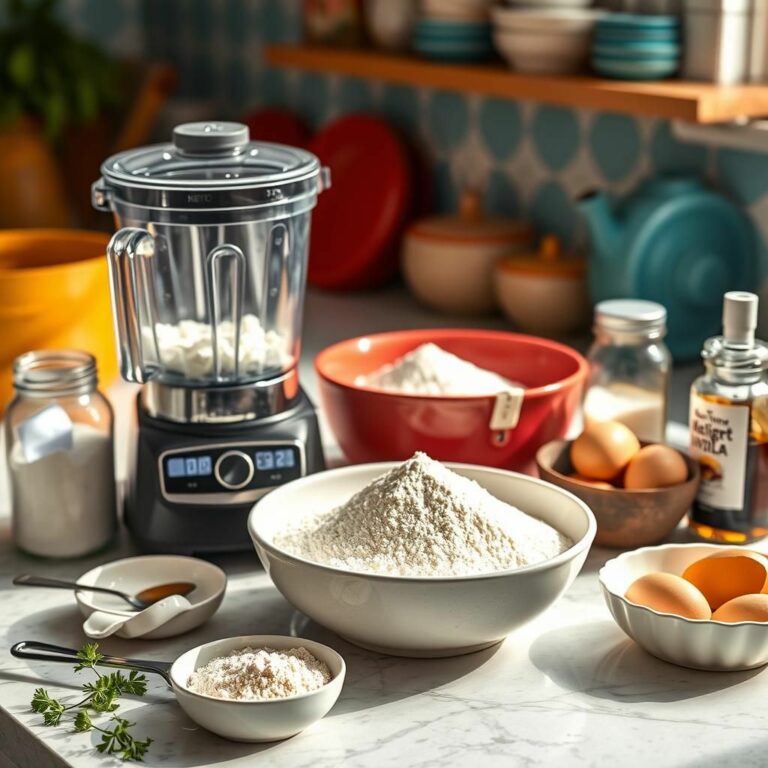Cottage Cheese Bagels: Easy, High-Protein, Low-Carb & Gluten-Free
Forget everything you thought you knew about bagels. For years, the bagel has stood as an undisputed champion of breakfast pastries and sandwich bases – a chewy, satisfying ring of dense dough, traditionally boiled and then baked. Delicious? Absolutely. But for those navigating specific dietary paths – whether seeking higher protein intake, limiting carbohydrates, avoiding gluten, or simply looking for easier-to-make options – the classic bagel often remains a distant, carb-laden dream.
Enter the cottage cheese bagel revolution. This isn’t just a tweak on a recipe; it’s a fundamental reimagining of what a bagel can be. By harnessing the unique properties of cottage cheese, combined with smart flour choices and simple leavening agents, it’s possible to create a bagel that delivers on texture, taste, and versatility, while aligning perfectly with high-protein, low-carb, and gluten-free dietary goals. And perhaps best of all? They are surprisingly, wonderfully *easy* to make right in your own kitchen.
This article dives deep into the world of cottage cheese bagels, exploring why they work, how to make them with minimal fuss, the ingredients that make them shine, and how they can fit seamlessly into a variety of lifestyles. We’ll uncover the secrets to achieving a satisfying texture, troubleshoot common baking woes, and unlock a universe of delicious variations. Prepare to ditch the traditional bagel guilt and embrace a healthier, simpler, and equally delightful alternative.
Why Cottage Cheese Bagels? Understanding the Benefits
The rise in popularity of cottage cheese bagels isn’t just a fleeting trend; it’s driven by compelling nutritional and practical advantages that resonate with a growing number of people focused on health, wellness, and dietary management. Let’s break down the core benefits that make these bagels a standout choice.
High-Protein Powerhouse
One of the most significant advantages of using cottage cheese as a base is its incredible protein content. Cottage cheese is a well-known source of slow-digesting casein protein, which can help promote satiety, support muscle growth and repair, and keep you feeling fuller for longer. While traditional bagels are primarily composed of refined carbohydrates with minimal protein, a cottage cheese bagel flips this script entirely.
Incorporating cottage cheese fundamentally alters the macronutrient profile. A typical serving of cottage cheese contains around 10-12 grams of protein per half cup. When this becomes a primary ingredient in a baked good, the resulting protein content per bagel is significantly higher than its conventional counterpart. This makes cottage cheese bagels an excellent option for:
- **Athletes and active individuals:** Supporting recovery and muscle synthesis.
- **Weight management:** The high protein helps control appetite and preserve lean muscle mass during calorie restriction.
- **Stabilizing blood sugar:** Protein slows down the absorption of carbohydrates, preventing rapid spikes and crashes.
- **General health:** Ensuring adequate protein intake is crucial for countless bodily functions.
Switching to a cottage cheese bagel means your breakfast or snack isn’t just a source of quick energy; it’s a sustained fuel source that supports your body’s needs throughout the morning or afternoon.
Navigating Low-Carb Living
For those following low-carbohydrate or ketogenic diets, traditional bread and bagels are typically off-limits due to their high net carb count. Cottage cheese bagels offer a revolutionary solution. While cottage cheese itself does contain some carbohydrates in the form of lactose (milk sugar), the amount is relatively low compared to the total volume used, especially when combined with low-carb flours.
The true low-carb magic happens when you pair cottage cheese with alternative flours like almond flour or coconut flour. You can even find resources like this Keto Breads and Pizza recipe book to explore more low-carb baking options.
- **Almond Flour:** Made from ground almonds, it’s significantly lower in net carbs than wheat flour and is a good source of healthy fats and fiber.
- **Coconut Flour:** Highly absorbent and fiber-rich, coconut flour is also much lower in digestible carbohydrates than wheat flour.
By utilizing these flours, the overall carbohydrate load of the bagel plummets. While a standard bagel can contain 40-60+ grams of carbohydrates, a cottage cheese bagel made with low-carb flours can often contain fewer than 10 grams of net carbs per serving. This makes them a viable and delicious option for:
- **Keto diet followers:** Providing a bread substitute that fits within strict daily carb limits. If you’re looking for a comprehensive plan, consider a Custom Keto Diet or a 30 DAY KETO MEAL PLAN. For broader guidance, The Keto Diet offers valuable insights.
- **Low-carb lifestyle:** Enjoying familiar food structures without derailing carb goals.
- **Diabetics:** Offering a lower glycemic index option that has less impact on blood sugar levels.
Enjoying a satisfying bagel sandwich or a schmear-covered ring is no longer a cheat day fantasy; it’s a perfectly permissible part of a low-carb eating plan. To explore more meal ideas, check out The Ultimate Keto Meal Plan or 500 Delicious Keto Recipes Cookbook.
The Gluten-Free Advantage
Celiac disease and non-celiac gluten sensitivity are increasingly common, making gluten-free alternatives essential for many. Traditional bagels are made with wheat flour, a primary source of gluten. Cottage cheese bagels, by their very nature, lend themselves beautifully to gluten-free preparation.
While some recipes might use a small amount of conventional flour, the most popular and successful versions specifically call for gluten-free flour alternatives. As mentioned in the low-carb section, almond and coconut flours are naturally gluten-free. Other suitable options include:
- **Tapioca Starch/Flour:** Often used in GF baking to add chewiness and structure.
- **Brown Rice Flour:** A whole-grain GF option that adds a slightly nutty flavor.
- **Oat Flour (Certified GF):** Provides a soft texture and good fiber content.
- **Commercial Gluten-Free Blends:** Many pre-mixed blends are available, designed to mimic the properties of wheat flour.
When combined with binding agents like psyllium husk or xanthan gum (necessary to provide structure and elasticity often lost without gluten), cottage cheese and GF flours create a dough that can be shaped and baked into a satisfying bagel. This opens up the world of bagels to individuals who previously had to avoid them entirely due to gluten intolerance or celiac disease.
Unexpectedly Delicious & Versatile
If the phrase “cottage cheese in a bagel” sounds odd, prepare to be pleasantly surprised. When blended and baked, the cottage cheese loses its characteristic curds and tanginess, transforming into a neutral, slightly creamy base that contributes moisture and structure without imparting a strong “cottage cheese” flavor.
The resulting bagel has a texture that, while different from a traditional dense, chewy bagel (which relies heavily on gluten development and boiling), is still incredibly satisfying. It’s often described as soft, slightly doughy, and substantial enough to hold up to toppings and fillings.
Furthermore, the neutral base makes these bagels incredibly versatile. They can be flavored in countless ways, from classic savory options like everything bagel seasoning, poppy seeds, or cheese, to slightly sweeter versions incorporating cinnamon or a touch of sweetener. This adaptability means they can serve as the perfect base for:
- Breakfast sandwiches (egg, avocado, bacon)
- Lunch sandwiches (turkey, cheese, veggies)
- Open-faced toasts (lox and “cream cheese,” avocado toast)
- Pizza bagels (tomato sauce, mozzarella)
Their neutral flavor profile allows the toppings to be the star, while the bagel provides a sturdy, nutritious foundation. Looking for more low-carb recipe inspiration? Consider exploring options like the Keto Snack Cookbook or the Keto Dessert Book.
Simplicity in the Kitchen
Traditional bagel making is a multi-step process involving yeast proofing, kneading, shaping, boiling, and baking. It can be time-consuming and requires a certain level of baking skill and patience. Cottage cheese bagels, on the other hand, epitomize ease.
Most recipes follow a simple “mix, shape, bake” process.
1. **Blend:** The cottage cheese is often blended smooth first (though some recipes skip this, the smoothest texture comes from blending).
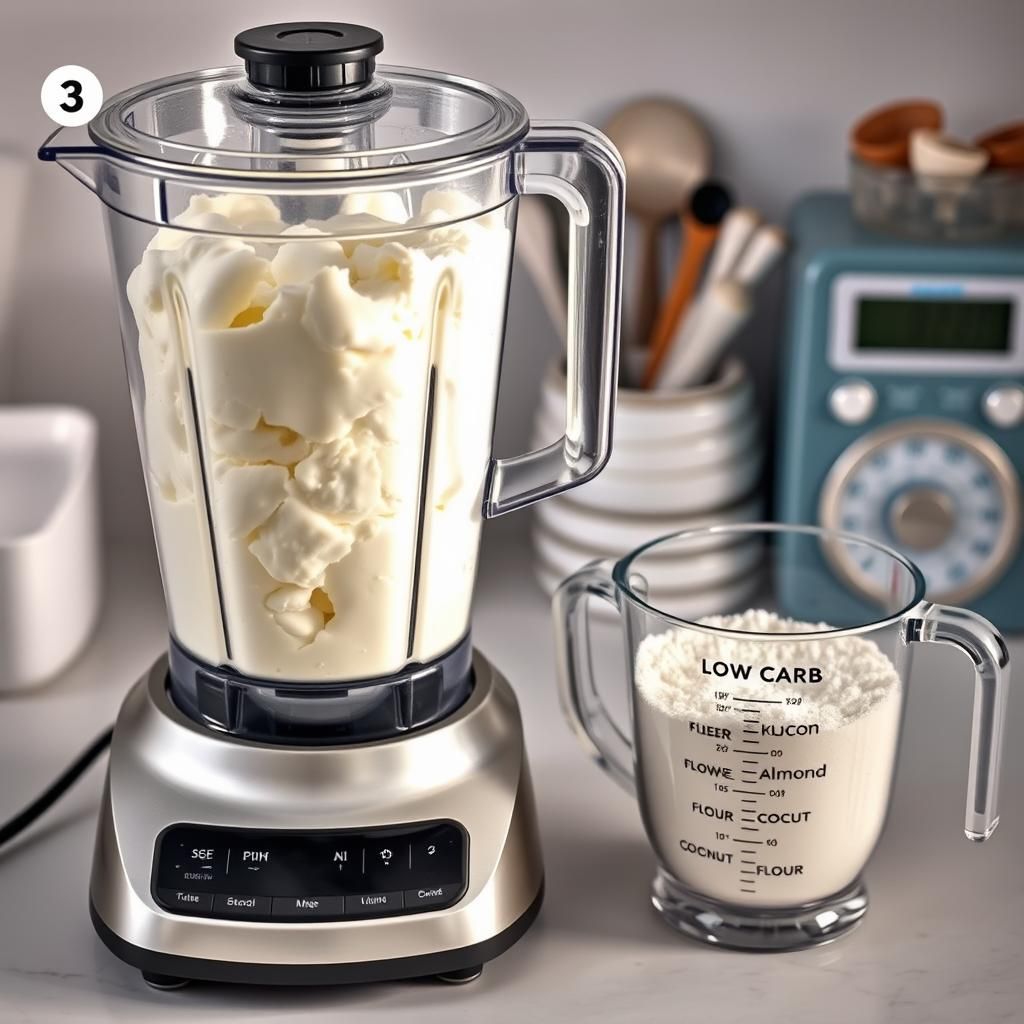
2. **Mix:** Combine the blended cottage cheese with the chosen flour, baking powder, a binder (like psyllium husk), and salt.
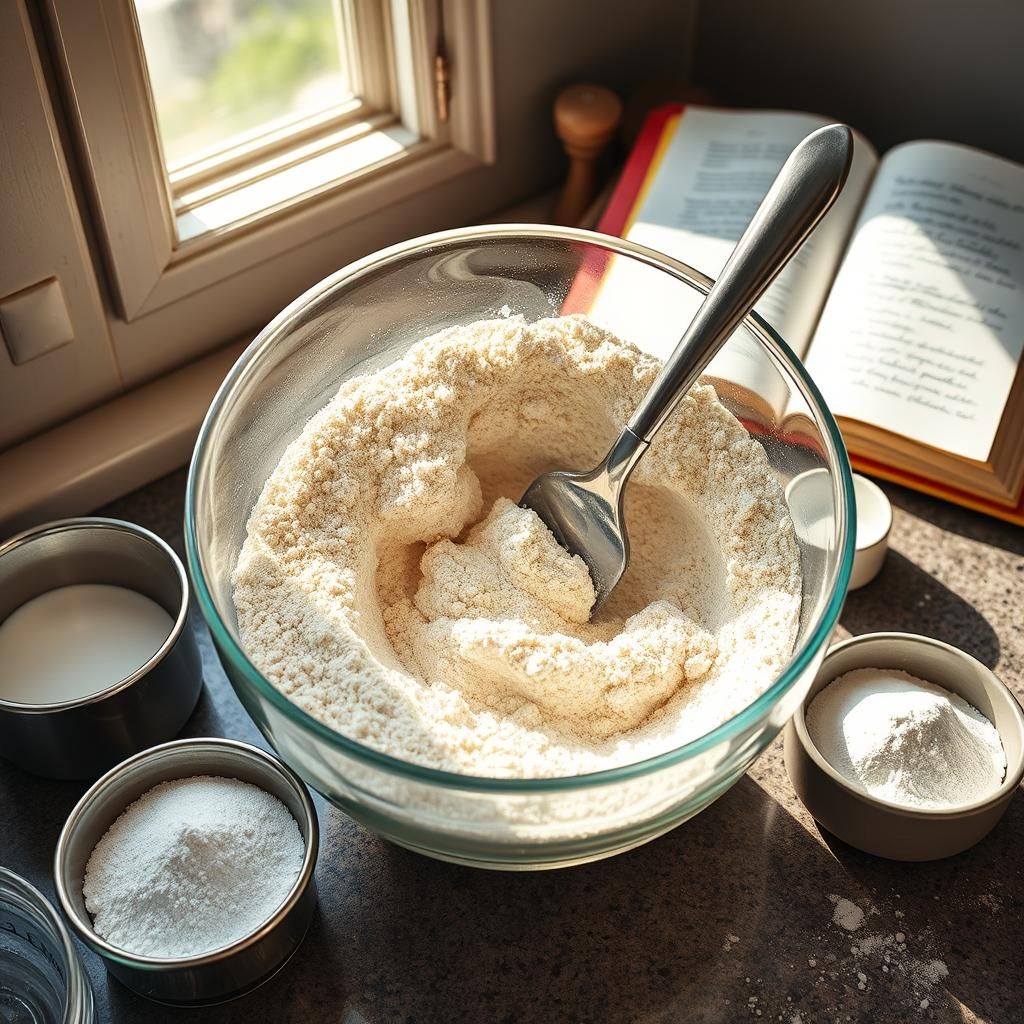
3. **Shape:** The dough comes together quickly and is relatively easy to handle, allowing you to form the classic ring shape.
4. **Bake:** Unlike traditional bagels, these typically go straight into the oven, often after a quick egg wash or milk wash for color and shine (or no wash at all for ultimate ease).
The absence of yeast means no waiting for dough to rise. The simple ingredient list and straightforward steps make this a beginner-friendly recipe, accessible to anyone with basic kitchen equipment and a desire for fresh, homemade bagels. This “easy” factor is a huge draw for busy individuals seeking healthy, convenient food options they can prepare themselves.
In summary, cottage cheese bagels represent a convergence of nutritional benefits and culinary convenience. They offer a high-protein, low-carb, and easily adaptable gluten-free alternative to traditional bagels, all while being remarkably simple to make at home. It’s a win-win for health-conscious consumers looking for delicious, functional foods.
Deconstructing the “Easy”: Ingredients Explained
The magic of cottage cheese bagels lies in their relatively simple ingredient list, where each component plays a crucial role in transforming humble ingredients into a satisfying bread-like texture. Understanding what each ingredient contributes demystifies the process and helps you troubleshoot or even experiment with variations.
The Star: Cottage Cheese (Choosing the Right Kind)
This is the cornerstone of the recipe. Cottage cheese provides moisture, protein, and structure once baked. The key to success often lies in using full-fat (4%) or at least 2% cottage cheese. Non-fat cottage cheese can sometimes result in a drier, less satisfying texture. The fat contributes to moisture and richness.
- **Blending:** Many successful recipes recommend blending the cottage cheese until completely smooth before mixing it with the dry ingredients. This step eliminates the curds and creates a smooth, creamy base that integrates better into the dough, resulting in a more uniform bagel texture. A food processor or a powerful blender works well for this.
- **Consistency Matters:** The moisture level of cottage cheese can vary slightly between brands. While the recipe should provide guidance, be prepared to potentially adjust the amount of flour slightly based on how wet your blended cottage cheese is.
Flour Power (Focus on GF Options)
Since the goal is often a low-carb and gluten-free bagel, the choice of flour is critical. A blend of flours or a single low-carb option is typically used. If you’re exploring more ways to use these flours, resources like this Keto Breads and Pizza recipe book can be very helpful.
- **Almond Flour:** A very popular choice for its neutral flavor and relatively low carb count. It provides a tender crumb. Use finely ground almond flour, not almond meal (which is coarser and contains skins).
- **Coconut Flour:** Highly absorbent and provides fiber. Use sparingly as it can make baked goods dry if too much is used. It often works best in combination with other flours.
- **Psyllium Husk Powder:** While technically a fiber source, it acts as a binder and structure provider in GF baking, mimicking some of the elasticity that gluten would provide. It absorbs a lot of liquid and gives the dough shape and chewiness. *Use powder*, not whole husks, for a smoother texture. Be aware that psyllium can give a slightly purple tinge to baked goods sometimes, which is normal.
- **Tapioca Starch/Flour:** Often added to GF blends or used alongside low-carb flours to improve texture, adding a bit of chewiness and helping with binding. While it adds carbs, it’s usually used in smaller quantities.
- **Xanthan Gum:** Another common GF binder. A small amount can significantly improve the structure and prevent crumbling. Some recipes use psyllium, some use xanthan gum, and some use a combination.
The specific blend and ratio of flours and binders will significantly impact the final texture of the bagel. Recipes are often formulated carefully to achieve a desirable result.
Binding Agents (Psyllium Husk, Xanthan Gum)
As highlighted under flours, psyllium husk powder and xanthan gum are crucial for gluten-free baking. They help hold the dough together, provide structure, and give the bagels some resemblance of chewiness that would otherwise be missing without gluten. Think of them as the glue in your GF dough. Without them, the bagels might be crumbly or fall apart.
Leavening (Baking Powder)
Since these bagels don’t typically use yeast (contributing to the “easy” factor), baking powder is the go-to leavening agent. Baking powder is a chemical leavener that reacts with moisture and heat to produce carbon dioxide gas bubbles, causing the dough to rise slightly and become lighter during baking. Ensure your baking powder is fresh for optimal results.
Flavor Enhancers (Salt, Optional Sweeteners/Herbs)
- **Salt:** Essential for enhancing flavor and balancing the other ingredients. Don’t skip it!
- **Optional Sweetener:** A small amount of a low-carb sweetener (like erythritol, stevia, or monk fruit) can be added if you prefer a slightly sweeter bagel, especially for variations like cinnamon raisin. However, for savory bagels, it’s usually omitted.
- **Optional Herbs/Spices:** This is where customization begins! Garlic powder, onion powder, Italian herbs, or even a pinch of cinnamon can be mixed into the dough itself to build flavor from the inside out.
Optional Add-ins (Everything Seasoning, Seeds, Cheese)
These are the final touches that turn a plain bagel into something special. They are typically added *before* baking, often sprinkled on top after an egg or milk wash helps them adhere. You can get inspiration for toppings from photos showing Creative Bagel Topping Options.
- **Everything Bagel Seasoning:** A hugely popular mix of sesame seeds, poppy seeds, dried garlic flakes, dried onion flakes, and sea salt. Adds immense flavor and texture.
- **Sesame Seeds, Poppy Seeds, Flax Seeds:** Can be sprinkled individually.
- **Shredded Cheese:** Can be mixed into the dough or sprinkled on top for cheesy bagels. Harder cheeses like cheddar or parmesan work well.
- **Other Mix-ins:** Diced jalapeños, chopped chives, sun-dried tomatoes (ensure they are dried, not oil-packed, or drain very well).
By understanding the role of each ingredient – from the protein and moisture provided by cottage cheese to the structure from psyllium/xanthan gum and the lift from baking powder – you gain confidence in making these bagels and adapting them to your liking. The simplicity of the components contributes directly to the “easy” nature of the recipe.
Crafting Your Cottage Cheese Bagels: A Step-by-Step Guide
Making cottage cheese bagels is remarkably straightforward, particularly when compared to traditional methods. While specific measurements will vary based on the recipe you follow (and you should always refer to a tested recipe for precise quantities), the general process is consistent and easy to master. Here’s a breakdown of the typical steps involved:
Preparation is Key
Like any baking project, a little prep goes a long way.
1. **Gather Ingredients:** Measure out all your ingredients accurately. Baking is a science, and precision helps ensure success.
2. **Preheat Oven:** Preheat your oven to the temperature specified in your recipe, typically between 350°F and 400°F (175°C – 200°C). Allow ample time for it to come to temperature. If you have an air fryer, you might also explore making them using methods found in a Keto Air Fryer Cookbook.
3. **Prepare Baking Sheet:** Line a baking sheet with parchment paper. This prevents the bagels from sticking and makes cleanup a breeze. Do *not* use wax paper, as it is not heat-safe for baking.
4. **Prepare Cottage Cheese (Optional but Recommended):** If your recipe calls for it, blend the cottage cheese until completely smooth in a food processor or blender. This step significantly improves the texture of the final bagel.
Mixing the Dough
This is usually a one-bowl affair, highlighting the ease of this recipe.
1. **Combine Wet Ingredients:** If using blended cottage cheese, place it in a mixing bowl. If your recipe uses eggs (some do, some don’t), whisk them into the cottage cheese.
2. **Combine Dry Ingredients:** In a separate bowl, whisk together your chosen flour(s), psyllium husk powder (and/or xanthan gum if using), baking powder, and salt. Ensure they are well combined to evenly distribute the leavening and binders.
3. **Combine Wet and Dry:** Add the dry ingredients to the wet ingredients.
4. **Mix to Form Dough:** Use a spoon, spatula, or even your hands to mix everything together. It will start as a shaggy mixture and come together into a cohesive dough. The dough will be softer and potentially stickier than traditional wheat dough due to the high moisture content from the cottage cheese and the nature of the GF flours. Mix until all the dry ingredients are incorporated. *Do not overmix* – unlike gluten dough, there’s no gluten to develop, so excessive mixing isn’t beneficial.
Forming the Bagels
This step requires a gentle touch, as the dough consistency is different from conventional dough.
1. **Divide the Dough:** Divide the dough into the number of portions specified by your recipe (typically 4-6 bagels). Weighing the portions can help ensure even-sized bagels.
2. **Shape Each Portion:** There are a few ways to form the bagels:
- **Rolling and Joining:** Roll each portion into a rope about 6-8 inches long. Bring the ends together and pinch firmly to form a ring.
- **Rolling into Ball, Poking Hole:** Roll each portion into a smooth ball. Gently poke a hole through the center with your finger and gently stretch it outwards to create the bagel shape. Aim for a hole about 1-1.5 inches in diameter, as it will shrink during baking.
3. **Handling Sticky Dough:** If the dough is too sticky, you can lightly wet your hands with water (instead of flour, which can make the bagels dry) to make handling easier. Psyllium husk continues to absorb liquid, so the dough may become easier to handle after resting for a few minutes.
4. **Place on Baking Sheet:** Arrange the formed bagels on your prepared baking sheet, leaving some space between them as they will expand slightly.
The Crucial Boil (or Lack Thereof)
Here’s where these “easy” bagels diverge significantly from tradition. Traditional bagels are boiled briefly before baking to create their signature chewy crust and dense interior. Cottage cheese bagels, being inherently different in composition, *do not require boiling*. This is a major factor in their ease of preparation.
Instead of boiling, most cottage cheese bagel recipes go straight into the oven. To achieve a nicer crust and help toppings adhere, a simple wash is often applied:
- **Egg Wash:** Whisk an egg with a tablespoon of water or milk. Brush this mixture lightly over the top and sides of each bagel. This promotes browning and a slightly glossy finish.
- **Milk Wash:** Simply brush with milk for a slightly less pronounced effect than an egg wash.
- **No Wash:** You can skip the wash entirely for the absolute easiest process, though the bagels might be paler and toppings won’t stick as well.
After applying the wash (if using), this is the time to sprinkle on any desired toppings like everything bagel seasoning, seeds, or cheese.
Baking to Perfection
Baking transforms the dough into a true bagel.
1. **Initial Bake:** Place the baking sheet in the preheated oven. The initial baking time is usually around 20-30 minutes.
2. **Check for Doneness:** Bagels are typically done when they are puffed up, feel firm to the touch, and are golden brown on top and bottom. Cooking times can vary based on your oven and the size/thickness of your bagels.
3. **Optional Broil:** For an extra golden, slightly crispier top, you can sometimes finish them under the broiler for 1-2 minutes at the very end. *Watch them constantly* during broiling, as they can burn quickly.
Cooling and Enjoying
Patience is required for the best texture.
1. **Cooling Rack:** Transfer the baked bagels from the hot baking sheet to a wire cooling rack immediately.
2. **Cool Completely:** This is a crucial step. While tempting to slice into a warm bagel, gluten-free baked goods (especially those with binders like psyllium) continue to set and develop their final texture as they cool. Slicing too early can result in a gummy or dense interior. Allow them to cool for at least 20-30 minutes, preferably longer, before slicing.
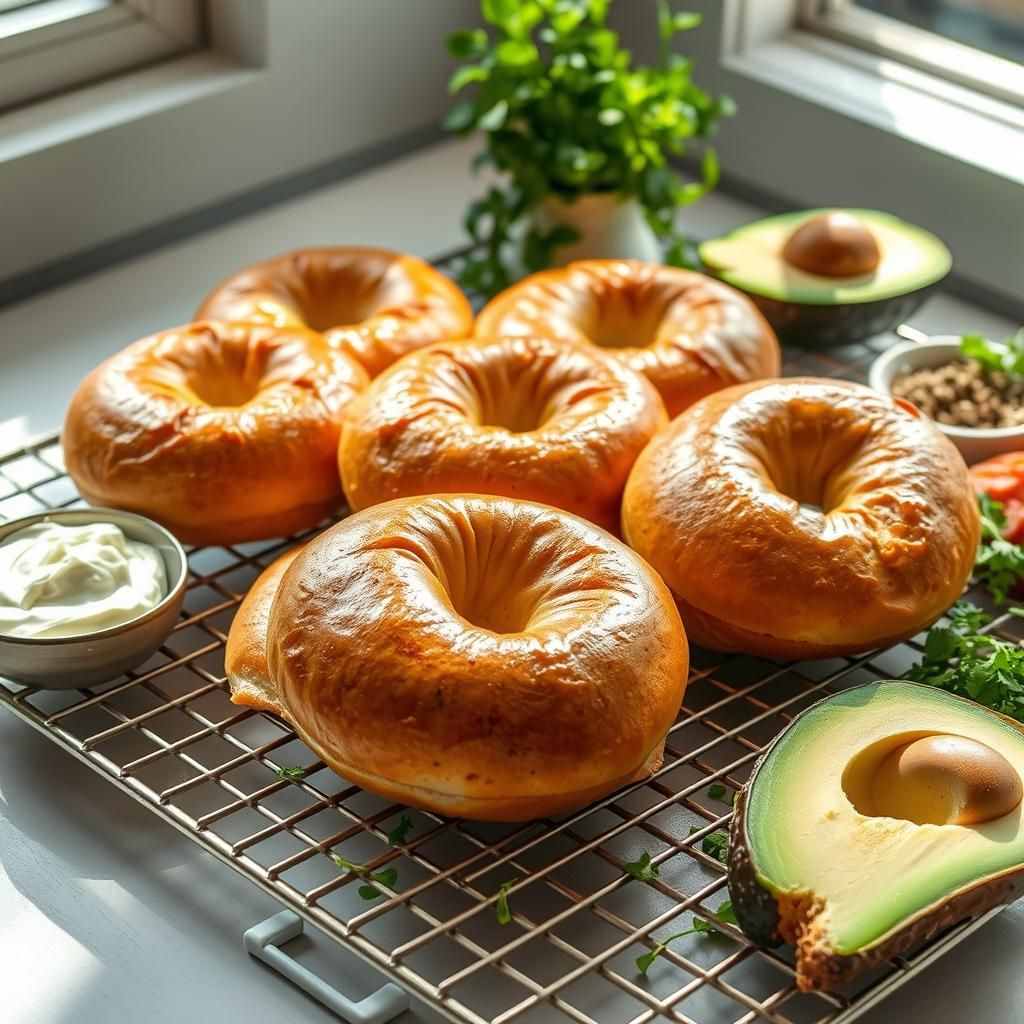
Once fully cooled, your easy, high-protein, low-carb, and gluten-free cottage cheese bagels are ready to be sliced, toasted (optional, but recommended for best texture), and topped with your favorite spreads and fillings!
Troubleshooting Common Cottage Cheese Bagel Issues
Even simple recipes can sometimes present challenges. Knowing how to identify and fix common problems will ensure consistent success with your cottage cheese bagels.
Why is my dough too wet/dry?
- **Too Wet:** The dough should be moist but manageable. If it’s excessively sticky and difficult to shape even with wet hands, you may need to add a tiny bit more of your chosen flour (start with a tablespoon). This can happen if your cottage cheese had higher moisture content or your flour measurement was slightly off. Psyllium husk continues to absorb liquid over a few minutes, so sometimes letting the dough rest briefly can help before adding more flour.
- **Too Dry:** If the dough is crumbly and won’t come together, it’s too dry. This could be due to using low-fat cottage cheese, too much flour, or insufficient liquid. Add a very small amount of water or a splash of milk (start with a teaspoon) and mix to see if it reaches the right consistency.
Bagels didn’t rise properly?
- **Old Baking Powder:** Baking powder loses its effectiveness over time. Ensure your baking powder is fresh. Test it by putting a spoonful in hot water; it should fizz vigorously.
- **Incorrect Measurement:** Using too little baking powder will result in flat, dense bagels.
- **Dough Consistency:** If the dough was too dry, the baking powder won’t be able to react effectively.
Texture problems (gummy, dense, crumbly)?
- **Gummy/Dense:** This is often caused by slicing the bagels before they have completely cooled. GF baked goods need time to set. It can also happen if too much binder (like psyllium) is used or if the ingredient ratios are off. Ensure you measure accurately and are using *psyllium husk powder*, not whole husks, for a smoother texture.
- **Crumbly:** This indicates the dough was too dry or didn’t have enough binder. Ensure you measured your flour and binder correctly. Using full-fat cottage cheese helps with moisture.
- **Psyllium Tint:** Psyllium husk can sometimes give the inside of baked goods a slightly purple or greenish tint. This is perfectly normal and doesn’t affect the taste or safety, though some find it visually unappealing.
Bagels spread too much?
- **Dough Too Wet:** If the dough is very wet, it will spread out rather than holding its shape. Refer to the “too wet” solution above.
- **Hole Too Small:** If you poked a hole that was too small initially, as the dough expands slightly, the hole can close up entirely, resulting in a ball shape rather than a ring. Make the hole generously large (1-1.5 inches) before baking.
By paying attention to dough consistency and following the steps carefully, you can avoid most issues and enjoy consistently successful batches of cottage cheese bagels.
Elevating Your Bagels: Variations and Customizations
While a plain cottage cheese bagel is delicious in its own right, one of their greatest strengths is their versatility. The basic dough is a fantastic canvas for adding different flavors and textures, allowing you to customize each batch to your cravings or dietary needs.
Savory Options
Perfect for breakfast sandwiches, lunch bases, or alongside soup. You might even find they pair well with recipes from a Keto Soup Detox plan.
- **Everything Bagel:** The classic! Brush with an egg or milk wash and generously sprinkle with everything bagel seasoning before baking.
- **Cheesy:** Add shredded cheese (cheddar, mozzarella, parmesan, nutritional yeast for a cheesy flavor without dairy) directly into the dough mixture before shaping. You can also sprinkle cheese on top before baking.
- **Herb & Garlic:** Mix dried herbs (like oregano, basil, thyme) and garlic powder into the dry ingredients. Fresh finely chopped herbs like chives or rosemary can also be kneaded gently into the dough before shaping.
- **Onion/Sesame:** Top with dried minced onion and sesame seeds.
- **Jalapeño Cheddar:** Fold in finely diced pickled jalapeños and shredded cheddar cheese into the dough.
Sweet Options
Great for a non-traditional sweet treat or paired with fruit spreads. For more low-carb sweet ideas, check out the Keto Dessert Book.
- **Cinnamon Swirl:** Add a teaspoon or two of cinnamon and a tablespoon of low-carb sweetener (like erythritol) to the dry ingredients. After shaping, you can create a swirl by rolling out the dough, sprinkling with cinnamon-sweetener mixture, and then rolling up and shaping the ring, though simply mixing into the dough is easier.
- **Raisin (Use Sparingly for Low-Carb):** If your low-carb diet allows for a few more carbs, you can fold in a small amount of sugar-free dried cranberries or a *very* small amount of raisins. Be mindful that dried fruit is higher in sugar and carbs.
- **Blueberry:** Fold in a small amount of fresh or frozen (not thawed) blueberries just before shaping. Be gentle to avoid crushing them.
Seeded & Topped Bagels
Beyond everything seasoning, a simple wash and sprinkle can make a big difference.
- **Poppy Seed:** Brush with wash, sprinkle generously with poppy seeds.
- **Sesame Seed:** Brush with wash, sprinkle generously with sesame seeds.
- **Flax Seed:** Sprinkle with flax seeds for added fiber and omega-3s.
- **Sunflower/Pumpkin Seeds:** Press larger seeds gently into the top of the bagel after the wash.
Different Flour Blends
Experimenting with GF flour blends can alter texture and flavor. Recipes from sources like this Keto Breads and Pizza recipe book often explore various flour combinations.
- **Coconut Flour Heavy:** If you prefer a denser, higher-fiber bagel, you can slightly increase coconut flour while reducing almond flour, but be cautious as too much coconut flour can lead to dryness.
- **Adding Tapioca/Rice Flour:** For a chewier texture closer to traditional bagels (at the cost of slightly higher carbs), incorporate a small amount (e.g., 1/4 cup) of tapioca starch or brown rice flour into your blend. You may need to adjust liquid slightly.
When adding mix-ins, be careful not to overload the dough, especially with wet ingredients like fresh herbs or fruit, as this can affect the dough’s consistency and baking time. Start with smaller quantities and adjust in future batches. These variations ensure that cottage cheese bagels can be a delicious and exciting part of your diet, offering endless possibilities beyond the basic recipe.
Storing and Reheating Your High-Protein Creations
Once you’ve successfully baked a batch of cottage cheese bagels, knowing how to store them properly is key to maintaining their texture and freshness, ensuring you can enjoy them for days to come.
Room Temperature Storage
Cottage cheese bagels, being lower in moisture than some traditional bread and made with dairy, have a relatively short shelf life at room temperature. They are best stored in an airtight container or bag on the counter for only 1-2 days. After that, they can start to dry out or potentially develop mold due to the dairy content if your kitchen is warm or humid. For longer storage, refrigeration or freezing is recommended.
Refrigeration for Longevity
Storing cottage cheese bagels in the refrigerator is the best way to keep them fresh for daily use. Place them in an airtight container or a resealable plastic bag and store them in the fridge for up to 5-7 days. Refrigeration slows down spoilage and helps maintain their texture slightly longer than room temperature. They are best reheated or toasted after being refrigerated.
Freezing for Future Enjoyment
If you’ve made a larger batch or don’t plan to eat them all within a week, freezing is an excellent option. Cottage cheese bagels freeze beautifully and can last for up to 2-3 months.
1. **Cool Completely:** Ensure the bagels are fully cooled before freezing. Freezing warm bagels can cause condensation and ice crystals, affecting texture.
2. **Wrap Individually:** For best results and convenience, wrap each bagel individually in plastic wrap or foil.
3. **Place in Freezer Bag:** Put the wrapped bagels into a large freezer-safe bag or container to protect them from freezer burn.
4. **Label and Date:** Label the bag with the date so you know how long they’ve been stored.
To use a frozen bagel, you can thaw it in the refrigerator overnight, or often, you can toast it directly from frozen or slightly thawed using a toaster or oven.
Best Ways to Reheat
Reheating can revive the texture of stored bagels.
- **Toasting:** This is the most common and often preferred method, especially for refrigerated or thawed bagels. Slice the bagel in half horizontally and toast in a toaster, toaster oven, or under the broiler until golden brown and slightly crisp on the cut sides. This improves the texture significantly.
- **Oven:** For whole bagels or multiple bagels, preheat your oven or toaster oven to around 350°F (175°C). Warm the bagels for 5-10 minutes, or until heated through.
- **Microwave (Use with Caution):** Microwaving can quickly make a bagel warm, but it can also make it rubbery or tough, particularly GF baked goods. If you must microwave, do so for only short intervals (15-30 seconds) and use it primarily to take the chill off before toasting.
Proper storage ensures that your efforts in making these delicious and healthy bagels pay off, allowing you to enjoy them conveniently throughout the week or pull them out of the freezer whenever a craving strikes.
Serving Suggestions: Beyond Cream Cheese
The beauty of cottage cheese bagels lies not just in their nutritional profile and ease of making, but also in their versatility as a base for a myriad of toppings and fillings. While classic cream cheese is always an option, there are countless ways to enjoy these high-protein rings.
Classic Pairings (Adaptable for Low-Carb/Dairy-Free)
- **Cream Cheese:** A timeless choice. For a lower-fat or higher-protein option, some spread blended cottage cheese or Greek yogurt instead! Many dairy-free cream cheese alternatives are also available for those avoiding dairy.
- **Lox and Cream Cheese:** The ultimate bagel experience. Pair smoked salmon with cream cheese (or alternatives) and add red onion, capers, and fresh dill. A protein-packed meal!
- **Butter/Ghee:** A simple, comforting spread.
Sandwich Ideas
Their sturdy structure makes them perfect for sandwiches. You can see an example of Bagel Sandwich Assembly.
- **Breakfast Sandwich:** Top with scrambled or fried eggs, bacon or sausage (turkey or plant-based options work too), avocado, or cheese. The high-protein bagel base complements a protein-rich filling.
- **Lunch Sandwich:** Use them instead of bread for turkey, ham, chicken salad, tuna salad, or roasted vegetable sandwiches. Load them up with lettuce, tomato, onion, and your favorite condiments. Here’s an idea for a Bagel Lunch Idea.
- **BLT:** A delicious spin on the classic, using the bagel as the base for bacon, lettuce, and tomato.
Open-Faced Toasts
Slice and toast the bagel halves for delicious open-faced creations.
- **Avocado Toast:** Mash avocado with lime juice, salt, and pepper. Spread on the toasted bagel and top with red pepper flakes, everything seasoning, a fried egg, or cherry tomatoes.
- **Pizza Bagels:** Spread with a little low-carb marinara sauce, sprinkle with mozzarella cheese and your favorite pizza toppings (pepperoni, mushrooms, peppers). Broil until the cheese is melted and bubbly. You can find more inspiration in this Keto Breads and Pizza recipe book.
- **Nut Butter and Fruit:** While higher in carbs, a moderate amount of almond butter or peanut butter with a few berries can be a satisfying snack (consider your daily carb limits). The Keto Snack Cookbook has more ideas.
- **Ricotta and Honey/Berries:** A lighter, slightly sweeter option. Spread with ricotta cheese and top with a drizzle of sugar-free syrup, a few berries, or a sprinkle of cinnamon.
With Meals
Bagels aren’t just for breakfast or lunch!
- **Soup Dunkers:** A toasted bagel half is great for dunking into hearty soups or stews. Consider pairing with recipes from a Keto Soup Detox plan.
- **Alongside Salad:** Serve a bagel half or two alongside a large salad for added substance and protein.
- **As a Side:** Use as a bread replacement alongside chili, curries, or casseroles, particularly if you’re looking for a gluten-free option.
The key is to think of the cottage cheese bagel as a versatile, nutritious vessel. Its mild flavor pairs well with both savory and slightly sweet toppings, making it adaptable for any meal or snack occasion. Don’t be afraid to get creative and explore different flavor combinations based on your preferences and dietary goals.
The Science Behind the Macros: Nutritional Breakdown
Understanding the nutritional impact of food choices is crucial for many dietary approaches. While the exact macros for your cottage cheese bagels will depend on the specific ingredients and quantities you use (especially the type and amount of flour), we can discuss the general principles that make them high-protein and low-carb compared to traditional bagels. For comprehensive guidance on managing your macros on a low-carb diet, exploring a Custom Keto Diet or The Keto Diet can be beneficial.
Protein Power Explained
As discussed earlier, the primary source of protein in these bagels is the cottage cheese. Cottage cheese is roughly 10-12% protein by weight. When you use a significant amount of cottage cheese as a base ingredient, it dramatically boosts the overall protein content of the final product. For example, a traditional large bagel might have 8-12g of protein from the flour. A cottage cheese bagel, depending on its size and the amount of cottage cheese used, can easily contain 15-20g or more of protein per bagel. This makes a significant difference in satiety and metabolic response compared to a carb-heavy breakfast. Protein requires more energy to digest and metabolize (thermogenic effect) than carbohydrates or fats, slightly boosting calorie expenditure.
Carb Count Considerations
The low-carb aspect comes from replacing high-carbohydrate wheat flour with lower-carbohydrate alternatives. If you’re strictly managing carb intake, resources like a 30 DAY KETO MEAL PLAN or The Ultimate Keto Meal Plan can provide structured approaches.
- **Wheat Flour:** Contains approximately 75g of total carbs per 100g, with a significant portion being starch (digestible carbs).
- **Almond Flour:** Contains around 20g of total carbs per 100g, but roughly half of that is fiber, resulting in about 10g of *net* carbs per 100g.
- **Coconut Flour:** Contains around 60g of total carbs per 100g, but a massive 40g of that is fiber, leaving only about 20g of *net* carbs per 100g. (Note: Coconut flour’s high absorbency means you use much less of it by weight than almond or wheat flour).
- **Psyllium Husk Powder:** Primarily fiber (indigestible carbs), contributing very few net carbs.
By using almond or coconut flour (or a blend heavy in these), the amount of digestible carbohydrate per bagel is drastically reduced compared to traditional bagels made with wheat flour. While a typical bagel might have 50g+ net carbs, a cottage cheese bagel with low-carb flour can often be under 10g net carbs, sometimes even as low as 3-5g net carbs depending on size and specific ingredients (e.g., avoiding tapioca starch). This makes them suitable for strategies like tracking net carbs (Total Carbs – Fiber = Net Carbs). Discover more recipes that fit these guidelines in the 500 Delicious Keto Recipes Cookbook.
Fat and Calorie Insights
The fat content will depend largely on the type of cottage cheese used (full-fat vs. reduced-fat) and the chosen flour (almond flour is higher in fat than coconut flour). Using full-fat cottage cheese and almond flour will result in a higher fat bagel than one made with reduced-fat cottage cheese and coconut flour. Healthy fats from almonds contribute to satiety and flavor.
The calorie count will be a sum of the protein, fat, and carbohydrate calories. While they might not always be significantly *lower* in calories than traditional bagels (especially if using full-fat ingredients), the *source* of those calories is different – more coming from protein and healthy fats and fewer from rapidly digested carbohydrates. This macronutrient distribution is often preferred for satiety, blood sugar control, and supporting body composition goals.
Fitting Them into Your Diet
Cottage cheese bagels are particularly well-suited for:
- **Keto Diets:** When made with strictly low-carb flours and binders, they can fit within typical daily net carb limits (often 20-50g).
- **Low-Carb Diets:** An excellent bread substitute for anyone reducing overall carb intake.
- **Gluten-Free Diets:** Provides a versatile, safe option for those avoiding gluten.
- **High-Protein Diets:** Boosts protein intake easily at breakfast or snack time.
They offer a functional food that supports specific dietary goals while providing the comfort and utility of a bread product. Always calculate the nutritional information based on the specific recipe and ingredients you use for the most accurate tracking. Online recipe calculators can be helpful for this.
The cottage cheese bagel stands as a testament to culinary innovation, proving that dietary restrictions don’t have to mean sacrificing beloved food forms. By cleverly utilizing the high-protein, moist base of cottage cheese and pairing it with low-carb, gluten-free flours and simple leavening, we unlock a bagel alternative that is not only remarkably easy to make but also aligns beautifully with a variety of health and wellness goals.
From its impressive protein punch that supports satiety and muscle health, to its significantly lower carbohydrate count that fits seamlessly into low-carb and keto lifestyles, and its inherent adaptability for gluten-free eating, the cottage cheese bagel offers a compelling package of benefits. Beyond the macros, its simple preparation process demystifies homemade baking, making fresh, healthy bagels accessible to everyone.
Whether you top it with classic cream cheese, transform it into a hearty breakfast sandwich, use it as a base for mini pizzas, or simply enjoy it toasted with butter, this versatile bagel alternative delivers satisfaction without the typical carb load of its traditional counterpart. With easy storage and reheating methods, you can batch bake and enjoy these nutritious rings throughout the week.
If you’ve been searching for a delicious, easy, and diet-friendly way to enjoy bagels, look no further. The cottage cheese bagel is a game-changer, offering a simple path to enjoying a classic comfort food in a way that nourishes your body and supports your health journey. Give this easy recipe concept a try, experiment with your favorite flavors, and discover the joy of baking and eating bagels that truly fit your lifestyle.
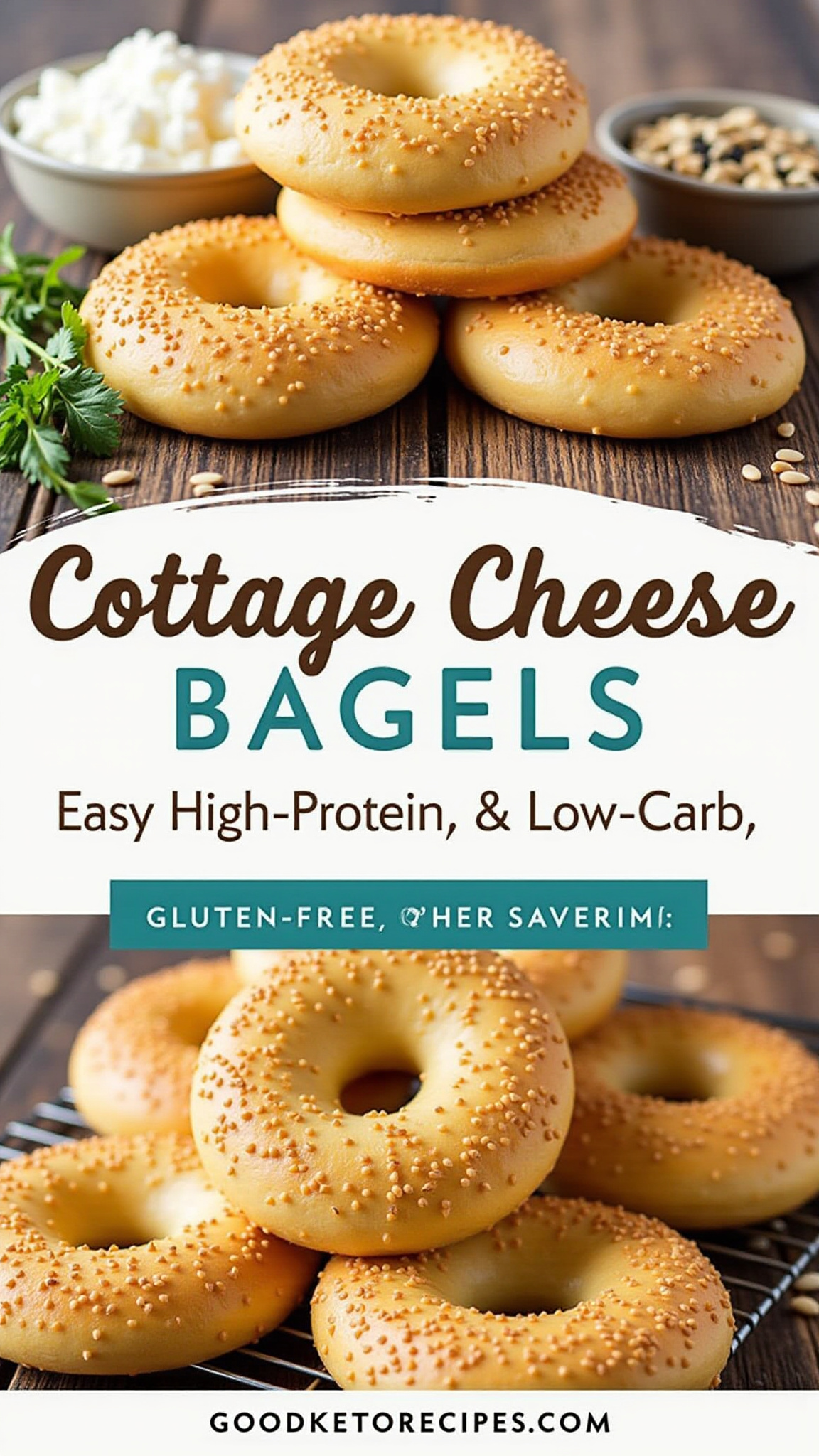
Affiliate Link Disclosure: Some of the links in this post are affiliate links. This means that if you click on the link and make a purchase, I may receive a small commission at no extra cost to you. I only recommend products or services that I personally use and believe will be valuable to my readers.
